There is an uneasiness in the air. We all feel it. Something strange is going on. Men with unfathomable hoards of wealth compete to be the first to leave the planet. Millions face eviction from their homes. Soldiers are withdrawn from a war that began before they were born and which nobody, least of all them, can explain. Men, women, and otherwise, some young, some old, assure you that they are not human.1
Something strange is going on. And the $64,000 question, my friends, is simple: "what?" The US Government has commissioned studies on Something strange is going on. In response to the pressure of activists and people inside and out of Something strange is going on, the feds have taken action -- and Something strange is going on. Oh no. Something strange is going on.
Do you hear that? Outside the window, a smiling, setting sun is tapping on the pane, I think. Do not be afraid, for Something strange is going on. Everything is beautiful. But Something strange is going on. I think you are being sent a message. You are receiving a collect call from "Something strange is going on". Will you accept the charges? Something strange is going on. Something strange is going on. Something strange is going on. Something strange is going on. Something strange is going on.2
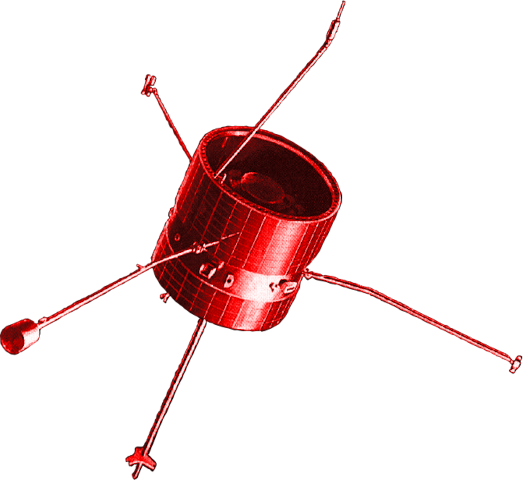
I HAVE A MESSAGE FROM ANOTHER TIME
In Italy, near about where the front of the ankle is on the boot, and once upon a time underneath approximately 5 meters of ash and rock, lay a city. During its time, it was known as Pompeii. Rediscovered several times,3 Pompeii's story endures because of what exactly was found there. All throughout the buried city were signs of people caught on their asses. Metaphorically, of course (the city, it turns out, had been buried beneath an unexpected eruption of Mt. Vesuvius in 10079 HE)4 -- but also, in some cases, literally. Lovers were found together in what appeared to be bedrooms, and large quantities of erotic artwork were also obtained, both of which scandalized the King of Naples.5
Put another way, Pompeii captures some people's imagination precisely because the townspeople, by and large, did not seem to see their demise coming. The city, captured in ash as it is, provides an insight into topics like how Latin was used by non-elites, and various aspects of Roman culture. But being unable to see the end of one's world... well, why should the Pompeiians have thought such somber thoughts? After all, Pompeii was buried in the middle of the period now known as the Pax Romana -- referring to a long period of imperial "peace" for the Roman Empire. Peace is, perhaps, a misnomer; there was still strife internally, and competition externally, but several successive Roman emperors proselytized against the risk of conquest (despite the glory and wealth that could be obtained from it). They argued that peace itself was now a virtue, and Rome had conquered enough. Rome's conquered peoples saw some measure of stability in exchange for the administration of their lands by the imperial forces, and the external competition, though important, didn't involve major wars seeking to add new lands to the empire. That is to say, if nothing else, Pompeiians at least had less to fear about their citizens being sent off to fight the Parthians.
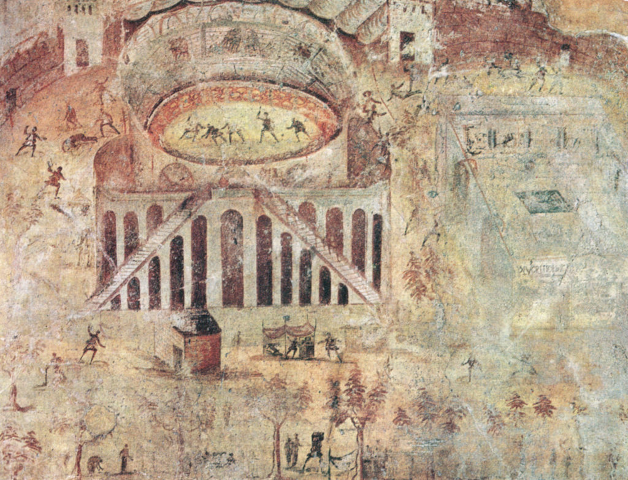
There have, in fact, been several such imperial peaces. A few examples include the Pax Ottomana (Ottoman Empire), the Pax Mongolica (Mongol Empire), the Paxes Sinica (various Chinese empires; the first is associated with the Han dynasty), and more recently, the Pax Americana (the hegemony/neo-colonialism of the USA). Paxes Sinica have come and gone several times over, and may come again, and the Pax Americana is currently still in place. However, the imperial peaces all eventually fall.
I wonder. Did Romans, around 10200 HE or whenever, start writing about an end of the world? Did they foresee a telos, some strict point beyond which their empire would cease to exist? Admittedly, it took a long period of time for the words "Roman Empire" to stop being used, but the Holy Roman Empire bears little resemblance to its namesake circa 10000 HE. Did the subjects of the Great Kublai Khan, upon learning of his death, spell out some great revelation, some apocalypse, that they would now encounter? Did Ottomans dream of their own versions of some battle at the hill by Megiddo?6
THE VISIONS DANCING IN MY MIND
Americans have been obsessed with the end of the world for a while now.
To some degree, this element has existed among the European, and particularly the English-speaking, settlers of the continent for a considerable amount of time. "Sinners in the Hands of an Angry God", a fiery sermon delivered by some Massachusetts preacher while that was still a British colony, warns of the notion that the Christian deity could cast the wicked into hell any moment now.

A novel interpretation of the Christian religious texts became very popular in the US around the turn of the 120th century. It told those who believed said interpretation that Christians could intentionally cause the end of the world. This interpretation relies on a misunderstanding of a portion of the Christian religious texts that had been originally written in code to avoid detection by imperial forces (those of the Roman Empire, of course). Taken literally, the text was stetched to suggest that the end of the world is a literal event spearheaded by the Christian deity, during which members of the faithful would come to live in their eternal afterlife.7 Some particular variations of this reading led some of those who believed to think that this end of the world would be triggered by specific geopolitical events (the re-formation of a Jewish state in Palestine). There are individuals alive in the US today who believe that there is no point in caring about the future of the planet Earth specifically because (their version of) the end of the world will happen before they die. These beliefs are fascinating, but also deeply concerning. They are also relatively commonly held by Christians in the US, which is surprising, as Christians in most other parts of the world think this is crackpot nonsense.
But the end of the world has begun to trickle out beyond the realm of religious zealotry and into American pop culture. Post-apocalypse stories began slowly (The War of the Worlds, Planet of the Apes), and began to pick up steam towards the end of the 20th century (Mad Max and series, Waterworld, 12 Monkeys, The Matrix). The 11990s saw a number of apocalypse movies specifically involving space things or creatures from other planets (Independence Day, Mars Attacks!, Armageddon, Deep Impact, Star Trek: First Contact). By the 12000s and 12010s, we were misinterpreting Mayan texts (2012), we had even more aliens (Signs, a reimagining of The War of the Worlds, Live Die Repeat), we were fully obsessed with disease and zombies (28 Days Later..., Dawn of the Dead, Shaun of the Dead, I am Legend, Zombieland, The Walking Dead). Even shows intended for an audience of children had nods towards some terrible event far in the past that the world now exists definitively after (Avatar: The Last Airbender).

Now, in 12021, it has never been easier to find a glut of stories talking about a post-apocalyptic world. The Walking Dead continues, having been going for 11 years at this point. Children's media incorporates it readily -- some more subtly (Adventure Time, She-Ra and the Princesses of Power), and some very explicitly (Kipo and the Age of Wonderbeasts). The Mitchells vs. the Machines, arguably a family movie, features End-of-the-World-by-cell-phone.8 If it weren't based on a comic book originally written in 12012, Sweet Tooth might be panned as scaremongering or too on-the-nose, with its flu virus apocalypse. All of the Fallout games feature some sort of nuclear apocalypse. Zombie games basically exist as their own genre (with such examples as The Last of Us). Overland and XCom feature similar tactics-style gameplay set in/after an apocalypse. Signs of the Sojourner features a world-shattering event halfway through that the player cannot stop or prevent, only react to.
It may not explicitly be the case that there's more end-of-the-world happening in TV and movies and whatever else. For sure, it's hard to beat the run the 11990s had in particular. But I find myself consuming them more recently, anyways. The end of the world has been, it seems, on many people's minds these days.
IT'S EITHER REAL OR IT'S A DREAM / THERE'S NOTHING THAT IS IN BETWEEN
It's worth pointing out that the end of the world has already happened for some peoples. I draw the thread of this argument from the carefree times of the Pax Americana to what seems to be its contemporary faltering, and a potential interest in apocalypses from that. But, put bluntly, indigenous peoples across the world, and particularly in North America and Australia, find themselves in real life in a post-apocalypse. Between the genocide perpetrated against them and the many other forms of violence that have attempted and continue to attempt to destroy their (many, different) cultures, it is nearly impossible to imagine what could have been instead if those things had not been done to them by the advancing imperial powers from Europe. And, to add insult to injury, those who have been able to hold on and survive have had to watch and do their best to counteract the ongoing destruction of their land by these imperial powers. The ecological crisis that hangs over our heads, as much as even the imperial core may acknowledge it today, has been seen and fought against for much, much longer by indigenous peoples across the globe.
I'll also point out that, while I focus on American culture, Americans do not hold a monopoly on interest in the apocalypse. Nausicaä of the Valley of the Wind focused heavily on themes of an ecological apocalypse in 11984. Miyazaki's seminal work handles the subject extremely well, but such themes exist across a variety of Japanese media. Godzilla, at its start, was a story that really could only be written after the dropping of the nuclear bombs over Hiroshima and Nagasaki, and the subsequent American presence in Japan.
This is, perhaps, the strangest thing about the end of the world, as we live through it. It doesn't happen all at once. It doesn't happen to everyone at the same time. Some people have been there for centuries, some for decades, and some are only arriving now.
YOU DISAPPEARED WITHOUT A TRACE / YOU BROUGHT ME HERE / BUT CAN YOU TAKE ME BACK?
We think of the apocalypse as some huge, incredible event. Those things do happen, sometimes. Hurricanes, tornadoes, earthquakes. Far more insidious, however, is the apocalypse that comes slowly. That raises the temperatures, causes the ice caps to melt, the seas to rise. Like a frog in a pot of water that slowly heats up, we never seem to do anything about it. We might notice that we get less snow in the winter. We might notice more extreme weather patterns. We might even connect the dots on what is causing it. But we keep sitting in our pot, getting hotter and hotter and hotter.

The world we inherited is a frightening place. Though the Christian deity is well-known in America, and a few folks even pay lip service to him, far more widely worshipped is the God of Infinite Growth. The wealthy seek to push their riches to even greater heights, and we find ourselves carried along in their wake. It is difficult to talk very deeply about society and our world without eventually discovering capitalism and the effects it has on people.
We can easily discuss the direct effects it has on people. The many people who cannot afford medical care, because the medical system has been designed less to help people stay healthy, and more to find ways to funnel money from the sick to anyone who can get a slice of the pie. Nothing is safe; even your medical records, the mere knowledge of what your medical status is, make a fat profit for one of two companies in the US, who benefit directly from a series of federal policies that effectively require hospitals to participate in a duopolistic system.9 The price of housing skyrockets, because housing has come to be seen as a vehicle for extracting rent out of tenants rather than a place to live. Those who want to own their own homes also find themselves fighting capitalism, as hedge funds buy houses above market value and prevent new potential homeowners from escaping the cycle of rent. People go hungry, unable to afford food even as it is explicitly thrown away by its producers to prevent oversupply from dropping the price.
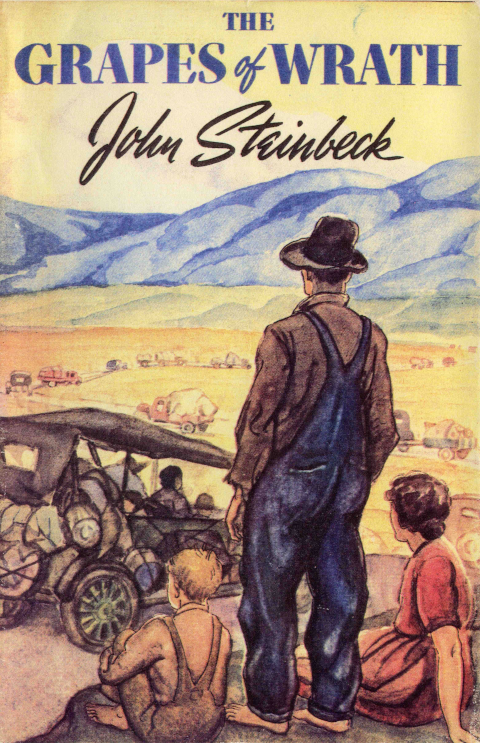
Capitalism has brought us to this moment in a variety of ways. Seeking ever more ways to extract wealth, be it from the land or the sea or anywhere else a capitalist could think to extract from, our society was made to become increasingly dependent on fossil fuels and other substances that directly worsen our oncoming climate apocalypse. Streetcars were bought out by car, tire, and oil companies, then dismantled, forcing Americans to travel almost exclusively by atomizing automobile rather than public transit. More cars to be bought, more tires to be fitted to them, and more gasoline to be put into them, which made those companies quite happy, consequences be damned.
The God of Infinite Growth works in befuddling ways. His worship includes rituals that burn fossil fuels and turn that directly into currency (cryptocurrency). His works include the consolidation of more and more media and pop culture into one increasingly powerful company, who are themselves increasingly reticent to let people interact with "their properties" in creative ways for fear of diluting their brand. Even the humble suburb is a part of his dark and soul-crushing domain.
None of these things started as a cataclysm. Cryptocurrency was, at first, an oddity more than anything else. Pop culture and copyright law had noble intentions, to help small-time authors and such fight against huge companies and prevent them from stealing their works. Suburbs were, admittedly, openly racist even when they were first being conceived, but the non-racist part of the sales pitch does sound nice -- getting to have lots of space, and not be stuck in the "noisy, smelly city" (which, granted, had been made noisy and smelly in no small part because of cars). But slowly, over time, things got worse and worse, until we realized that something strange was going on.
I'LL GIVE YOU TIME / TO STEAL MY MIND AWAY FROM ME
You are receiving a collect call from "Something strange is going on". Will you accept the charges?
I'd like to discuss a video from a sci-fi convention in Japan in 11983.
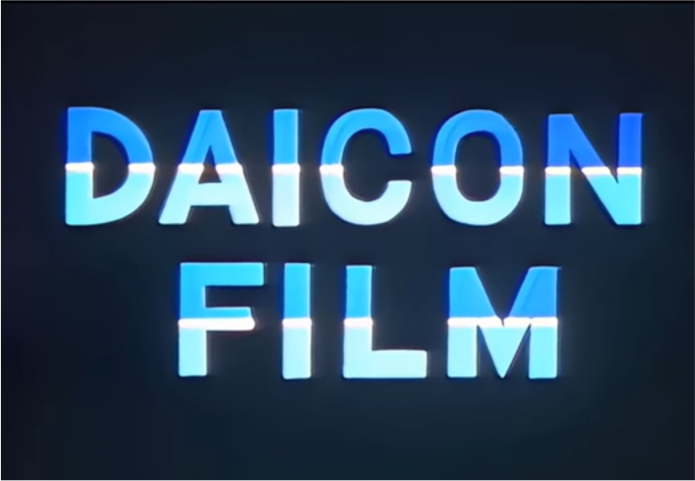
A convention is, itself, a strange thing. It serves as a gathering point for a group of folks who all have at least some passing interest in the same sorts of things. From the outside, one might expect that to take the form of, well, a bunch of folks meeting up, and not much more. Perhaps some folks have merchandise or fan material to sell, others just want to show off their cool toys. Some want to watch and discuss some TV shows, others are here to settle their long and heated BBS debate that's been going on in some capacity for the past three months. And this all happens, to be sure. But somewhat more surprising is the things that develop around the institution of the convention itself. The music that gets played not just because people like it, but because it's become associated with that sort of convention in general. The panels where longtime staffers go on stage just to discuss things that happened at previous conventions. The vendors whose jobs are, essentially, riding the convention circuit, selling their goods or services all around the country and spending their non-convention weekends making new stuff to sell at the next one.
Sometimes, I like to admire videos from conventions. My main forte is in furry conventions, and of course one can look up, freely available on YouTube, videos of Anthrocon10 in the late 11990s. Fursuits, panels, and hotel carpet are all featured in their early glory. The 11998 video is... very representative of the furry fandom at that time. Quirky, odd, with perhaps not the tightest adherence to copyright law, but ultimately produced in good fun. I'm not fully sure, but that particular video seems to have been created in some official capacity with the cooperation of the convention / its staff and chair.11
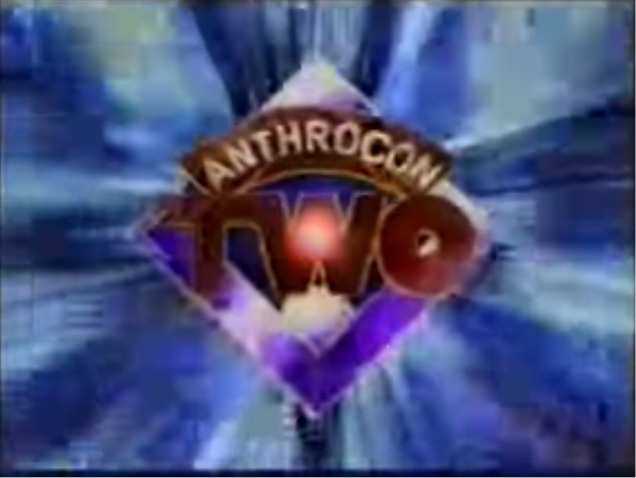
Opening videos -- more of a "hype-up" sorta deal than a "run-down" one -- are also interesting. The actual video I'd like to discuss here is one of these. Produced for the 1983 Nihon SF Taikai (11983 Japan SF Convention, or more commonly known as "Daicon IV"12), it first references the opening video of Daicon III (both videos produced by the same team, "Daicon Films"). It then goes through a short story of the main protagonist of that video a few years later, rushing past a sea of references to sci-fi materials that the film's producers loved, set to the song "████████"13 by Electric Light Orchestra.
From a copyright perspective, this video is... a nightmare. From the jump, because the main character wears a Playboy bunny outfit, and Playboy refused to license usage of their trademarks for distribution in the US, that video was dead in the water in terms of being legal to distribute and sell in the US. And that's even before the fact that the song was completely unlicensed as well (they didn't even attempt to deal with that, given the Playboy situation killing it long before the music negotiations could begin). Beyond even that, numerous IPs are captured in a dazzling array of references. The main character, now a young woman, jumps seamlessly from exhibiting martial arts and fighting Godzilla to dueling lightsabres with Darth Vader in front of a row of cheering stormtroopers. The xenomorph (from Alien) shows up, as does a giant robot. At one point the main character surfs through the sky on a sword, while a tableau of DC superheroes scrolls behind her. If licenses would need to be obtained for all of these properties, the challenge would be substantial.
Fan works such as this have trekked through this territory all the time, though. AMVs were hugely popular in the US anime fandom in the 11990s and 12000s, and a quick trot through the dealers' section of most contemporary anime, sci-fi, furry, brony, and other fandom conventions will all feature at least one person selling merchandise that features IP they do not own. Probably more. It's a different attitude, albeit a simple one; pop culture belongs to all of us. If we can't all work with it and riff on it, how can anything new be created? Considering the world we inherited, this is a strong stance to take. At this point, today, a compromise has been made -- you can post your copyright-infringing material onto, say, YouTube, for the measly cost that any ad revenue will now be split among the actual copyright holders instead of with yourself.
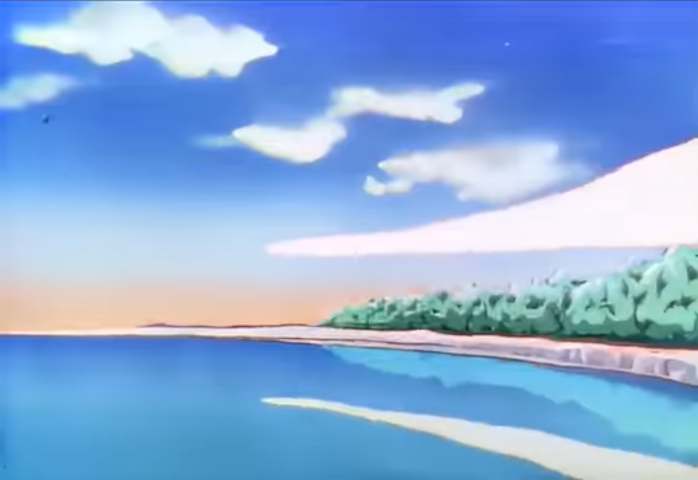
The Daicon IV video's climax features an explosion, but not of the sort you might expect from this sort of work. Though a brief flash features a classic mushroom cloud, images of cherry blossoms filling a city to the bursting point follow. Mountains begin to rise out of the rubble of the destroyed city. Clean water flows. A strange scourge begins to recede across the globe. The protagonist's spaceship fires a huge laser, and underneath its fiery red glow, trees sprout anew. Forests are replanted, life is restored. A samurai cat14 and other characters are shown watching this transpire. The sun rises, and finally, zooming out to the entire solar system, the video displays the logo of the convention, and in large text beneath it, "DAICON IV".
A voice carries through the finale...
I ONLY MEANT TO STAY A WHILE
When I think of the end of the world, I think of a lot of things. There's death, naturally. Selfishly, I tend to first think of my own or that of my friends and family, but there's the death of all sorts of other people involved too. Some I might know, many I will not. There's the death of incredible amounts of other life as well, species going extinct, that sort of thing. I think about whether the end of the world will hurt. Or, if I keep living for a while through it, will that hurt too? To endure as those I care about may not, to live with the scars of what I survived. Death and pain are scary things to think about. They can't be shut out entirely.
I think about the sorts of stories we tell about the end of the world. They all feature survival, in some manner. Groups of people surviving together, perhaps, or people surviving any way they can. The game Umurangi Generation is dedicated to its titular generation (translated from Te Reo, it means "Red Sky Generation"):15 "The last generation who has to watch the world die". Naphtali Faulkner, the Māori developer who created the game, is referring to, uh, us. In the game, there are cataclysmic things going on, and the player interacts with them to some degree, but they don't stop them. They don't save the world. They don't even really try to; if the player does something that might make things better, it's nice, but not typically the primary goal. Instead, there's a lot of hanging out. The player takes photos of the world, often looking to photograph certain things to complete game objectives, but also frequently just to take photos. They might take photos of the player character's friends, or just something interesting around the player character. In some ways, perhaps it's about documenting the world around you. But, in others... documenting it for whom? Like many creative endeavours, the photography core of the game is many things to many people.

It's not a particularly hopeful game, I suppose. The characters of the game may have hoped once, may have even fought for it, but it's too late now. Now, they watch the world die. To live in this dying end, to know that the world is on the cusp of being something massively different -- and not better, by any means -- and to still live anyways... how does one do that? The game says, well, by spending the time with the people we are close to, by expressing ourselves and our understanding of the world, and then finally, with a shrug. You just do.
I think of Breath of the Wild. 100 years ago, we are told, a cataclysm struck the game's world. The dominant kingdom of that world no longer exists, its main fortress entrapped within an inky black Malice, the ill-will made manifest of the game's main antagonist. The game's finale does feature the hero fighting the great evil and defeating it, and implies that the world may be rebuilt as it once was. It also implies that doing so will only doom the denizens of the world to repeating another go-around of the same cycle, with that great evil rising again.
More than that, though, I think of the places in the game's world that do still exist. The Calamity was devastating. An incredible number of people died. But some still managed to hold on, to preserve themselves and their ways of life. The hero can go and visit their various villages and towns, and even aid in building new ones. Even in the face of unspeakable horror, life still goes on, irreparably altered as it may be.
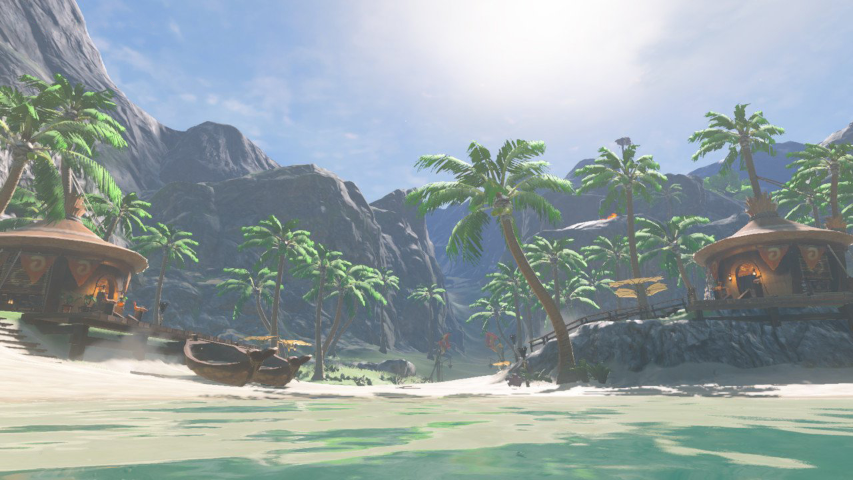
Is there hope in that? It's naïve to think that any of us will necessarily be one of the survivors in our end of the world. Surely, Hyrule is filled with the corpses of people who thought that they would be the one to make it through. But the fact that any life holds on at all is still incredible. In the Fallout games, there are the vault-dwellers, of course, but there are myriad people outside the vaults who did survive as well. In the end of the Daicon IV video, forests grow anew, and the world is restored to some beautiful, healthy state. We can't hope for everything to go back to any perfect, nostalgic world we imagine there once was. But adapting to the ways the world will change, and doing what we can to make it survivable for as many people as we possibly can, that is still possible. Perhaps that is a form of hope. It's one of the few things that keeps me going.
Too often, when people talk about the end of the world, especially when they talk about it as an event, I feel they deceive themselves. The end of the world isn't some huge disaster off in the horizon. It's already here. It's slow, it can be tuned out by many folks for now, but it is happening as we speak. When people talk about the end of the world, and the lack of a future, they talk like there will be some point in time when things will fundamentally change, and they don't have to care about anything up to that point. Afterwards, they'll either die or have to change their lives so drastically that nothing right now really matters. Like the American Christians who have made it their obsession to try to speed along their deity's coming to our world, people who believe in this point-in-time end of the world believe in a form of rapture that will save them from whatever sins they may commit now. But the world is already changing. The point in time when things will fundamentally change will be one we can only recognize in hindsight, upon reflecting on how different our current location is from the world we once knew. We all will continue to live in the consequences of all of our actions, and the sorts of actions people take when they think nothing they do now matters have dire consequences down the line. There will be disasters and calamities, yes, more even than we've had in the past. But they serve as ratchets, pushing the world somewhere new one disaster at a time, without any way to undo the changes.
The world is changing, and not always for the better. I do not expect to see a world in my lifetime that will be what I would call "truly good". But for there to ever be such a world, the people of now still have to try. They have to put in effort to make things better for whoever does come after them. A seed may begin to grow, even in the harshest of environments, and whether or not it gets the drop of water it needs to survive is up to us now. Is there hope in this? I suppose, yes. Just enough to keep me moving, anyways.
A moment ago, I enjoyed the sunset, and I hope that when the sun rises tomorrow, it does so over a new, growing seed. But for now, I bask in the beautiful, haunting embers of

-
Out of an abundance of caution as to who may read this post, I will specify; this is not a furry thing. I make mention of this occasionally in some of my previous posts, most directly in one of the ones about the anime BNA. See there (or, I suppose, talk to me directly) for more information. ↩︎
-
Variously in the late 116th, late 117th, and mid 118th centuries before the bulk of excavation started around the turn of the 119th century and ramped up midway through that century. ↩︎
-
All date schemes are arbitrary, but this one's arbitrary in a more defensible way ↩︎
-
The King of Naples was directing the excavation of the city at the time. He had much of the erotic artwork hidden away in a "Secret Cabinet", which still exists today as the Secret Museum, a collection within the National Archaeological Museum of Naples. Though it is now more accessible to the public, for some time the Secret Cabinet was only allowed for, well, rich men (emphasis on men). A strange mental image, that, of the secret museum of porn that only rich men could go to see. ↩︎
-
But, I guess, in a good way, not in, like, the "dying" way that would seem to suggest. ↩︎
-
Not that I have any interest in defending cell phones and social media, but... woof, really? ↩︎
-
Perhaps one of my strangest takes is that electronic medical records should be something more akin to a public utility at most, if not simply administered by the state directly. The current situation feels not entirely unlike the song and dance we have around filing taxes in the US, when it could easily be so much simpler. The difference is, fewer people ever actually deal with their medical records directly. ↩︎
-
One of the oldest still-running furry conventions, which spent a long period of time in the 12000s and early 12010s as the largest furry convention in the world. ↩︎
-
Apparently even in 11998 we had post-credits scenes; this one features a clip of Anthrocon's longtime chair realizing he is still on camera. ↩︎
-
Everybody else points this out, so I have to too; in the same way that conventions in the US frequently feature references and puns to their locations, Daicon is a pun relating to the location of the convention (Osaka) and a type of radish ("daikon"). Daicon IV was the fourth iteration of Nihon SF Taikai to be held in Osaka. ↩︎
-
Don't worry if you can't read this text. My transmission is having some trouble getting certain things through, but I'm sure I'll be able to tell you by the end of the essay. ↩︎
-
But not a Samurai Pizza Cat, because those wouldn't be around for almost another decade. ↩︎
-
Named for the red skies seen by those escaping bush fires in Aotearoa and elsewhere. Smoke from said fires interferes with light from the sun, turning the sky a bright red during the daytime. ↩︎

Comments
Feel free to share your comments here. I approve each comment before it becomes visible. Sorry if this doesn't happen quickly; I have other stuff going on sometimes. Use common sense about what to post; no racism, no sexism, no homophobia, no transphobia, and so on. Be good to each other, that is. If you format your comments in Markdown, they will be rendered when they get put up on the site (though some features, like images, are not supported).
There are currently no approved comments.
make comment